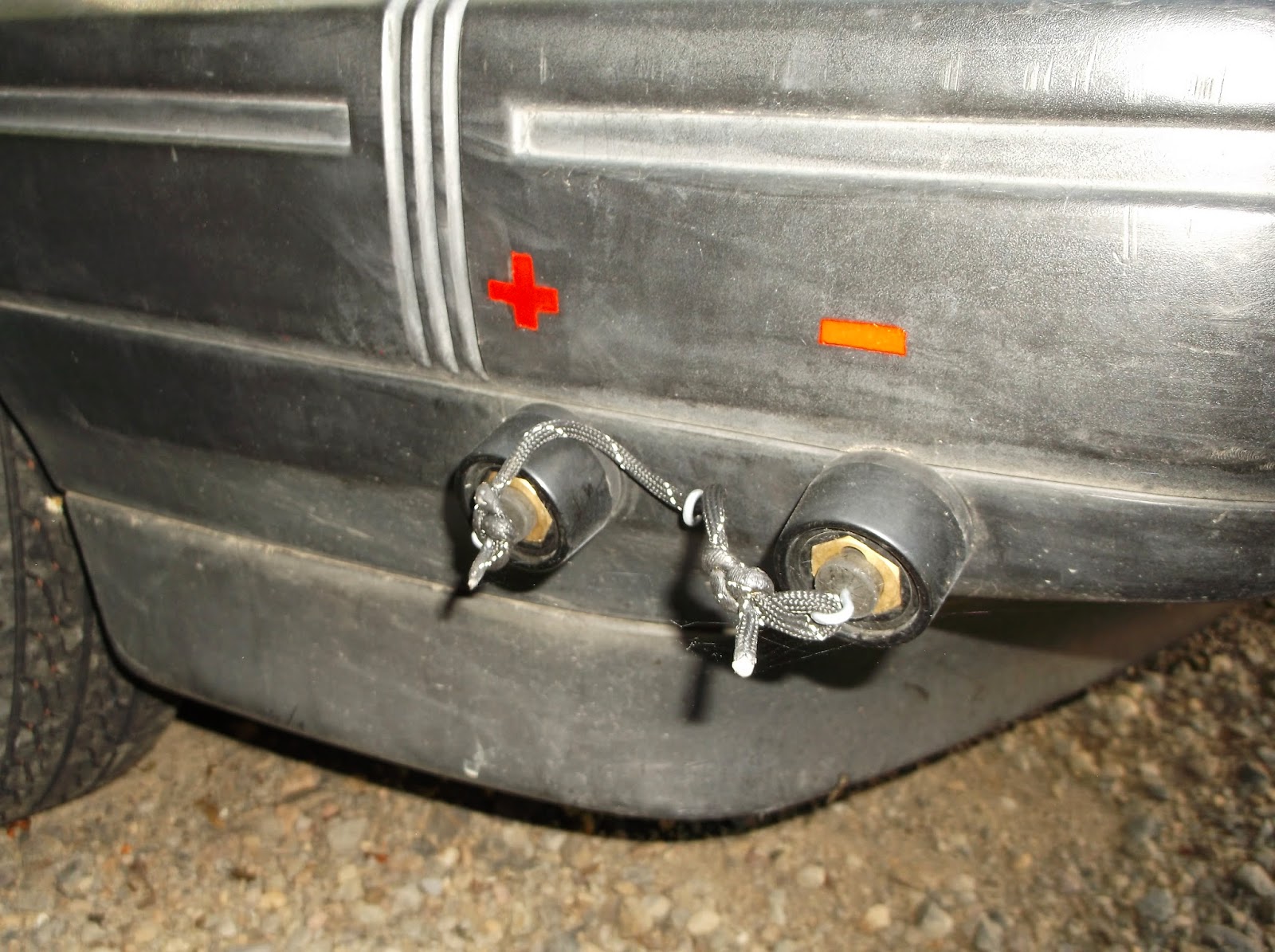This is the first of several posts on my project to create an engine driven welder on my volvo 940. The basic idea is that a regular automotive alternator with it's regulator removed can create enough voltage and current for welding. This is a common project for off-roaders and googling "alternator welder" reveals lots of information, including kits. However I wanted to take it one step further than normal off-roaders and build a real control circuit with voltage regulation, as well as a multi-process machine that could do stick, mig, and tig. I got started with the website http://diy-welder.com/, which documents building a fancier control circuit using analog circuits. I took a lot of useful information from there, but decided to use Atmega328 microcontrollers instead.
The first step of this project was buying an alternator. I picked up a used leece neville 200 amp alternator off a school bus which was a great starting point because it has no built in regulator or diodes (rectifier). You can use any alternator, but you'll have to remove those components. Controlling the voltage output of the alternator is simple, the more voltage you put into the field coil the more voltage comes out of the alternator. Then the 3-phase ac output of the alternator is rectified using diodes (you need ones that can handle the high voltage spikes that come from arc welding, which is why you need to replace the built in ones) and with that alone you're read to stick weld. Mig and Tig are done by adding on a wire feeder, gas solenoid, and control circuitry. For feedback to the microcontroller, I'm using a voltage divider into the ADC to measure voltage and an allegro 200 amp hall effect voltage sensor to measure current. You'll notice on the diagram that the micro doing measurements has an isolated power supply, this is to completely isolate the welder output from the car's 12v system. This isn't strictly necessary, but it reduces the chance of a high voltage spike frying the electronics in my car.

This picture shows the alternator installed where the AC compressor used to be. I fabricated a new mounting bracket which reused the old tensioner. My car has v-belts, which makes this install very easy. It's not impossible to do this on an engine with serpentine belts, but it's more difficult.

Next I ran large gauge cables (I think 2 gauge, although I'm not sure, see note below) from the alternator to the rectifier. The rectifier I used was one out of an old welder I bought on ebay, and is rated for 200 amps. It also came with a nice aluminum frame. It was the perfect size to fit in front of the radiator. One thing to note, it came with MOVs (the surge protector part of a surge protector) which absorb voltage spikes. The MOVs it came with were trashed (scorch marks on the outside) and needed to be replaced. This will increase the life of the diodes. I then added 2 motor start capacitors to the output of the rectifier, about 15 or 20 uf each, which I got from habitat for humanity. Finally, I added a temperature switch out of an old microwave which turns on the cooling fan if the aluminum frame gets too hot. I've since discovered this is unnecessary since the engine idling heats up pretty fast and turns on the fan itself.

From there the output goes through a inductor (simply the wire wound through a microwave transformer a few times) to the quick disconnects mounted on the air dam.
That's about all I have now, it works as a basic stick welder putting out about 100 amps with 1/8" 7018. Next up is to build the control electronics and remote control.
A note about wire gauge:
For automotive applications it is essential to use stranded wire to prevent wire fatigue from vibrations. However not all stranded wire is the same. Welding cable like the kind going to your stringer uses many small strands to create a very flexible cable. Commercial stranded cable usually has fewer, larger strands. The more strands you have, the more flexible the cable is. However, it increases the overall size of the cable. For inside the car, I used stranded cable from the bulk section of home depot, which has very few large strands. It's not that flexible but is much smaller than normal welding cable, making it easier to run throughout the car. The cable in the pictures may not look as large as you're used to, but it has the same amount of copper as more flexible cable.











